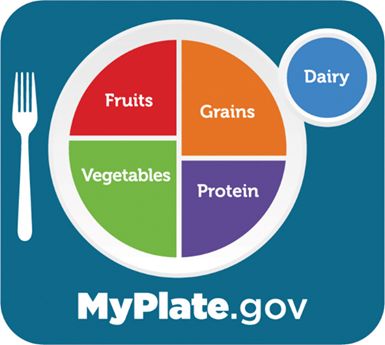Nearly half (47%) of U.S. adults live with hypertension, also known as high blood pressure. High blood pressure often presents with few or no symptoms. It is important to get your blood pressure checked so that you know your numbers. High blood pressure increases the risk of developing heart disease or having a stroke. Certain physical traits, family history, and lifestyle choices are associated with high blood pressure. Schedule an appointment with your physician if you have concerns about your blood pressure.
High blood pressure can often be improved by making healthy lifestyle changes such as maintaining a healthy weight, adopting an active lifestyle, limiting alcohol consumption, and quitting smoking. Making these changes may help lower high blood pressure and keep it low. Read on to learn how these lifestyle changes can help keep your blood pressure down.
Maintain a Healthy Weight
There are many benefits to maintaining a healthy weight. If you are overweight, you have a higher risk for certain chronic diseases and conditions such as high blood pressure. Losing 5 to 10 pounds may help lower your high blood pressure by reducing strain on your heart. The key to maintaining healthy weight is to incorporate heart healthy eating habits and to exercise. Ways to engage in heart healthy eating include the following:
- Be aware of your food portion size.
- Eat more fruits and vegetables.
- Eat foods high in fiber, such as whole grains.
- Include lean protein like skinless poultry and fish at each meal.
- Add legumes and nuts to meals and snacks.
- Substitute saturated fats for unsaturated fats like olive oil, canola oil, vegetable oil, and nut oils.
- Choose water first. Drink low-calorie beverages like diet soda, tea and lemonade without sugar, or water with a splash of juice.
- Limit sweets and sugar-sweetened drinks, red meats and unhealthy fats (American Heart Association, 2022).

Credit: myplate.gov
One way to find out if you are overweight is to calculate your body mass index (BMI). This is a measurement that comes from the calculation of your height and weight and determines which weight class you fall into (Centers for Disease Control and Prevention [CDC], 2021). See the table below for weight categories and an example of how BMI can be used.
Table 1. Body Mass Index Categories.
Table 2. For example, here are the weight ranges, the corresponding BMI ranges, and the weight status categories for an adult who is 5’ 9”.
If you are interested in learning more about your BMI and how to calculate it, check out the website, https://www.cdc.gov/healthyweight/assessing/bmi/index.html , or contact your local UF/IFAS Extension office to speak with a Family & Consumer Sciences agent.
Adopt an Active Lifestyle
In addition to making smart food choices, it's important to become more active. Being active can help you lose weight, but physical activity can lower blood pressure even if weight loss does not occur. The 2018 Physical Activity Guidelines for Americans suggest that adults with high blood pressure should participate in at least 150 minutes (two and a half hours) of moderate physical activity or 75 minutes (one hour and 15 minutes) of vigorous physical activity each week. For moderate physical activity, this is about 22 minutes a day (U.S. Department of Health and Human Services, 2018). You don't have to do all of this activity at once! If 22 minutes a day is too much to start, try a 10- minute walk after breakfast, lunch, or dinner. Start slowly and increase your speed and distance as you are able. Moderate physical activity includes the following:
- Mowing the lawn
- Gardening
- Line Dancing
- Yoga
- Pilates
- Golf (no cart!)
- Bicycling
- Brisk walking
- Weightlifting
- Swimming
Be sure to speak with your doctor before increasing your physical activity if you have high blood pressure.

Credit: getty images
Limit Alcohol Consumption
The third lifestyle change that can help control your blood pressure is limiting the amount of alcohol you drink. Men should limit their alcohol intake to two drinks or less per day, and women (and lighter-weight men) should have one drink or less per day. One alcoholic drink is defined as 12 ounces of regular beer, 4 ounces of wine, or 1½ ounces of 80-proof distilled spirits (American Heart Association, 2019). If you take medication or have a health condition, check with your health care provider to see if it is okay for you to drink alcohol (NIAAA, 2017).
Stop Smoking
According to the American Heart Association (2018), smoking is a strong risk factor for high blood pressure. If you smoke, quitting decreases your risk for high blood pressure, heart disease, and lung and other cancers. Talk to your doctor about quitting. Most communities offer support programs for those who want to quit. There may be some medications that help as well (American Heart Association, 2019). Saving money is another benefit to kicking this unhealthy habit. Did you know that if you quit smoking one pack of cigarettes a day, you would save about $240 in one month and more than $2,920 in a year, based on the national average of $8.00 per pack in 2022? Depending on where you live, the cost of cigarettes may vary. Nevertheless, quitting or cutting down on cigarette smoking would give you extra money to enjoy more active hobbies such as dancing or gardening.
High Blood Pressure: Know the Myths, Get the Facts
There is an abundance of information on social media and other outlets about what you should and should not do if you have high blood pressure. Know how to separate the facts from myths and make smarter choices.
- Myth: There is nothing I can do about high blood pressure because of my family history.
- Fact: Even if your parents or family members have high blood pressure, having a healthy lifestyle can reduce or eliminate high blood pressure.
- Myth: My blood pressure is checked when I visit my doctor therefore, I don’t need to check it at home.
- Fact: Monitor your blood pressure at home to make sure the plan of treatment is working. Blood pressure can fluctuate, so try to take readings at the same time each day.
- Myth: My blood pressure reading is low, so I don’t need to take my medication.
- Fact: Always follow your doctor’s recommendation on how and when to take your medications.
- Myth: I cook with a lower salt alternative such as pink Himalayan salt and it's better for me.
- Fact: Sodium comes in various forms; the goal is to limit sodium intake. Some salts claim to offer more health benefits due to trace minerals. Be mindful of trigger words in advertising that diverts from the true significance in terms of moderation. (American Heart Association, 2018)
Where can I get more Information?
Your local UF/IFAS Extension Family and Consumer Sciences (FCS) agent may have more information and/or classes for you to attend. Find your local UF/IFAS Extension office at http://sfyl.ifas.ufl.edu/find-your-local-office/. Also, a registered dietitian (RD or RDN) can provide reliable information. You can ask your doctor to refer you to an RD or RDN if you need diet counseling for a health condition.
For information on how to make better dietary choices regarding sodium intake, see EDIS document FCS8129, Nutrition for Health and Fitness: Sodium in Your Diet at FCS8129/HE696: Nutrition for Health and Fitness: Sodium in Your Diet (ufl.edu).
Reliable nutrition information is also available on the following websites:
References
American Heart Association. (2019, December 30). Is drinking alcohol part of a healthy lifestyle? Retrieved on January 4, 2022. https://www.heart.org/en/healthy-living/healthy-eating/eat-smart/nutrition-basics/alcohol-and-heart-health
American Heart Association. (2018, April 5). Help! I want to quit smoking! Retrieved on January 4, 2022. https://www.heart.org/en/healthy-living/healthy-lifestyle/quit-smoking-tobacco/help-i-want-to-quit-smoking
Centers for Disease Control and Prevention. (2022, June 3). About Adult BMI. Retrieved on January 4, 2022. https://www.cdc.gov/healthyweight/assessing/bmi/adult_bmi/index.html
National Institute on Alcohol Abuse and Alcoholism (NIAAA). (2017). Older adults. National Institutes of Health. Retrieved on January 19, 2018. https://www.niaaa.nih.gov/alcohol-health/special-populations-co-occurring-disorders/older-adults
U.S. Department of Health and Human Services. How much will you save? Smokefree.gov. Retrieved on January 4, 2022. https://smokefree.gov/quit-smoking/why-you-should-quit/how-much-will-you-save
U.S. Department of Health and Human Services. (2018). Physical Activity Guidelines for Americans. (2nd ed.). Retrieved on January 4, 2022. https://health.gov/our-work/nutrition-physical-activity/physical-activity-guidelines/current-guidelines
World Health Organization. (2021, June 9). Obesity and overweight. Retrieved on January 4, 2022. https://www.who.int/news-room/fact-sheets/detail/obesity-and-overweight